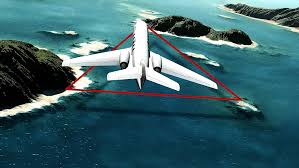The Tragic Implosion of the Titan Submersible: A Deep Dive into the Disaster

In June 2023, the world watched in suspense as a submersible named Titan went missing during a dive to the Titanic wreck site. What began as a daring expedition ended in tragedy when authorities confirmed that the vessel had suffered a catastrophic implosion, killing all five people on board. The incident raised profound questions about the risks of extreme exploration, the limits of technology, and the regulatory gray areas in deep-sea tourism.
What Was the Titan?
The Titan was a submersible designed and operated by OceanGate Expeditions, a private company offering crewed missions to the Titanic for researchers and wealthy tourists. The vessel was relatively small—just 22 feet long—and made from a combination of carbon fiber and titanium. Unlike traditional deep-sea submersibles built by military or scientific institutions, Titan was a commercial prototype with limited third-party certification.
OceanGate marketed its expeditions as a blend of exploration and science, charging participants up to $250,000 per seat. The company emphasized innovation and cost-efficiency, which some later criticized as being prioritization of profit and publicity over safety and engineering rigor.
The Final Dive
On June 18, 2023, Titan began its descent to the Titanic wreck, located about 12,500 feet (3,800 meters) below the surface of the North Atlantic. Communication with the support ship was lost approximately 1 hour and 45 minutes into the dive. A multinational search-and-rescue operation followed, drawing global media attention and comparisons to other high-profile disappearances.
After days of searching, a remotely operated vehicle (ROV) discovered debris from the Titan on the seafloor, consistent with a “catastrophic implosion.” The U.S. Navy later revealed it had detected an acoustic anomaly—likely the implosion—around the same time the vessel lost contact.
What Caused the Implosion?
While investigations are ongoing, experts agree that the most probable cause was structural failure under immense pressure. At Titanic depths, the ocean exerts over 5,500 pounds per square inch. Any weakness in the hull or joints could trigger an instant collapse, giving the crew no chance of survival.
Critics pointed out that Titan was not certified by an independent safety body such as the American Bureau of Shipping or DNV. Some engineers also raised red flags over the use of carbon fiber for the pressure hull—an unusual choice for deep-sea submersibles, as the material may degrade under repeated stress.
In 2018, a group of experts warned OceanGate that the experimental approach lacked proper safety assurances. Unfortunately, these warnings were not heeded.
A Cautionary Tale
The Titan implosion is a sobering reminder of the perils of pushing boundaries without adequate oversight. It also highlights a broader issue: the lack of clear international regulation for private deep-sea ventures. Unlike aviation or spaceflight, deep-sea tourism remains a relatively new and loosely governed field.
The victims—explorer and OceanGate CEO Stockton Rush, British billionaire Hamish Harding, Pakistani businessman Shahzada Dawood and his son Suleman, and French Titanic expert Paul-Henri Nargeolet—were all adventurers drawn to the mysteries of the deep. Their loss has spurred renewed calls for safety, transparency, and accountability in extreme tourism.
The Future of Deep-Sea Exploration
In the wake of the disaster, the deep-sea exploration community is grappling with tough questions. Should private companies be allowed to operate at such depths without strict regulation? How do we balance innovation with safety? And most importantly, how can we prevent another tragedy like this?
Technology will continue to evolve, and the lure of the unknown will always attract pioneers. But the Titan tragedy is a stark reminder that when venturing into the most hostile environments on Earth, safety cannot be an afterthought—it must be the foundation.





Leave a Comment